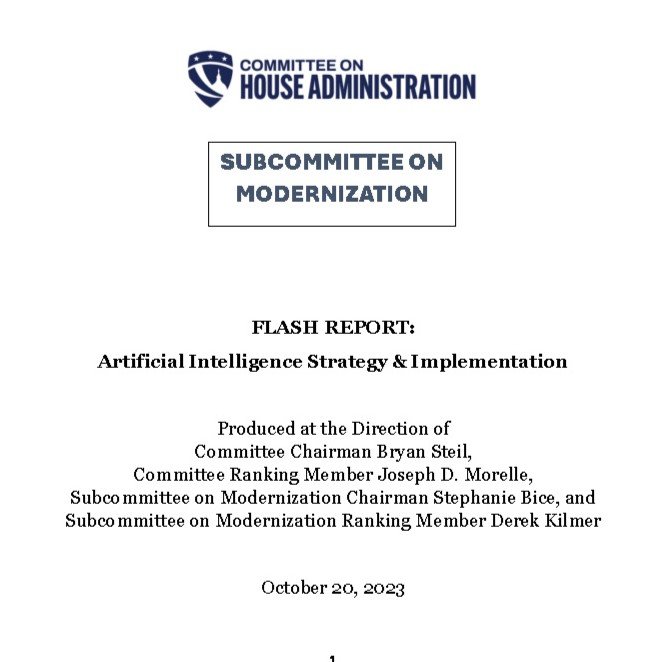Keeping Pace with AI: The Legislative Branch Charges Forward in Second Flash Report
In a significant display of technological leadership to contrast with the House’s overall leadership challenges of the last three weeks, the Legislative branch is charging forward in its strategic and transparent integration of artificial intelligence (AI).
A new flash report released on Oct. 20 provides a noteworthy update on the wide range of AI advancements and accomplishments occurring within the House and across the entities that support it including the House Chief Administrative Office (CAO), Clerk of the House, Library of Congress (LOC), and Government Publishing Office (GPO).
Earlier this summer, the House Committee on Administration’s (CHA) Subcommittee on Modernization, under the leadership of Chairwoman Stephanie Bice [R, OK] and Ranking Member Derek Kilmer [D, WA], took a monumental step of requesting monthly reports from Legislative branch entities on their use and ongoing development of AI systems. The requested information included:
Updates on any actions taken to compile an AI Use Case inventory and efforts to make that information publicly accessible
Progress made on establishing governance documents for the use of AI
Other actions taken related to institutional adaptation to AI
Following an initial flash report released by the Subcommittee on Sept. 14 outlining CHA’s strategic approach to AI oversight and preliminary accomplishments, this second report provides a noteworthy update on the wide range AI experimentation across the Legislative branch. The CAO has developed a list of over 200 possible AI use cases to highlight this emerging technology’s potential, building off its prior authorization to allow staffer use and experimentation of ChatGPT4 Plus. With a similar focus on increasing efficiency, LOC Labs is experimenting with the use of natural language processing on legislative bill data to automatically generate bill summaries, an advancement that could greatly increase nonpartisan comprehension of Congress’s work if successful. Additionally, the National Library Service for the Blind and Print Disabled is leveraging machine learning models to summarize lengthy book descriptions to assist readers in more easily finding titles that may appeal to them, a proof of concept for how AI can make information more accessible to a wide range of audiences.
Similarly significant strides are being made in AI governance and information sharing. The GPO is in the final stages of adopting an AI policy aligned to NIST standards to formalize AI use and create an advisory committee, and the CAO is actively refining existing data governance policies for the AI age through continued conversations with private and public AI experts. Institutional staff are being encouraged to attend conferences, participate in AI training seminars, and coordinate discussions with national experts on data governance.
CHA’s continued actions of driving data governance accountability and AI-use transparency through monthly reporting requirements are placing America’s Legislative branch on the cutting edge of AI adoption in government. Through this level of focused engagement, the Legislative branch is taking an innovative, strategic, and intentional approach to AI that, if continued, could reap substantial efficiency gains for Congress. Thankfully, subsequent publicly-posted CHA Flash Reports will allow interested citizens, scholars, and policymakers around the world to follow along and track these impactful accomplishments as Congress adapts to this new technology.

